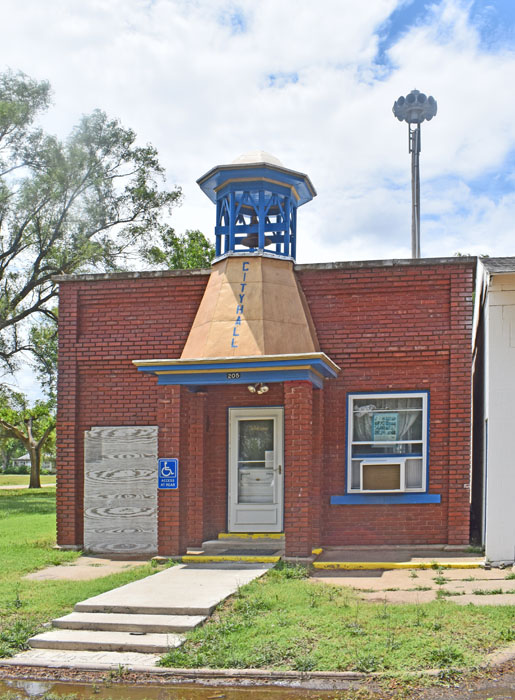
Culver, Kansas Main Street, about 1900.
Culver, Kansas, is a small incorporated town located in Culver Township, Saline River, in southwest Ottawa County. As of the 2020 census, the city’s population was 114, and it had a total area of 0.15 square miles, all of which is land.

Old homestead in Culver, Kansas.
A post office was established in Culver on April 14, 1873; however, the town wasn’t officially laid out until approximately 1878. It was named after George Washington Culver, who was living in Ottawa County in August 1868 when he was recruited to be a scout for Colonel George Forsyth, following the first Spillman-Bacon Creek Indian raids in Lincoln County, Kansas. Culver was killed on September 17, 1868, at the Battle of Beecher Island in Colorado.
In 1878, Culver had a Presbyterian Church and a public school. It was on the stagecoach line to Minneapolis and Salina, from which the daily mail was delivered to R.H. Lesley, the postmaster. Salina, about 15 miles distant, was the nearest shipping point.
In early 1902, a group of men came together to organize the Culver State Bank. It started with a capital of $10,000 with E.F. Keezel serving as the cashier. Work began by the end of January 1902, and it opened for business on March 1. Unfortunately, the bank was robbed of $3,000 in cash on May 17, when robbers blew the safe open. They made their escape on a hand car on the train track before abandoning it north of Salina and escaping west on the night train. The bank reopened on March 24, and it was reimbursed for the loss through insurance.
Culver High School was started in 1903 by Rube Applebaugh, who taught for two years.

Collapsed railroad bridge near Culver, Kansas.
In 1910, Culver was a station on the Union Pacific Railroad, boasting a bank, telegraph office, and express office, as well as a money order office with two rural routes. All lines of business activity and the leading denominations of churches were represented. That year, the town’s population reached its peak at 326.
In 1913, the IOOF Hall was built, and H.L. Perdersen first published the Culver Record newspaper. The newspaper continued until 1919.
Like many banks of the Great Depression, the Clover Bank failed and closed on July 9, 1932. Later, the building served as a drug store and post office. However, after a flood in 1993, it was torn down. All that remains today is the bank vault.
In the following decades, as Culver’s population declined, its schools were consolidated, businesses were discontinued, its railroad tracks were removed, and its post office closed on April 6, 1984.
However, Culver remains incorporated today with a mayor and a council meeting regularly. It also has an active Methodist Church, numerous homes, silos and grain elevators, but there are no businesses or services in the community.
Today, the old firehouse serves as the city hall. This quaint structure with its old-fashioned steeple and fire bell once housed a hand-pulled fire cart. When there was a fire, the fire bell was rung, and men would come running to get the heavy wagon. Pulling it by hand, the fire wagon saved a restaurant back in the days before World War I.
Today, Culver is served by the Twin Valley USD 240 public school district in Bennington, Kansas.
The semi-ghost town is situated approximately ten miles southwest of Minneapolis, at the intersection of 90th Road and Aspen Road, adjacent to an abandoned railroad line.
©Kathy Alexander/Legends of Kansas, updated June 2025.
Also See:
Sources:
Abandoned Kansas
Blackmar, Frank W.; Kansas: A Cyclopedia of State History, Vol I; Standard Publishing Company, Chicago, IL 1912.
City of Culver
Ottawa County
Wikipedia



